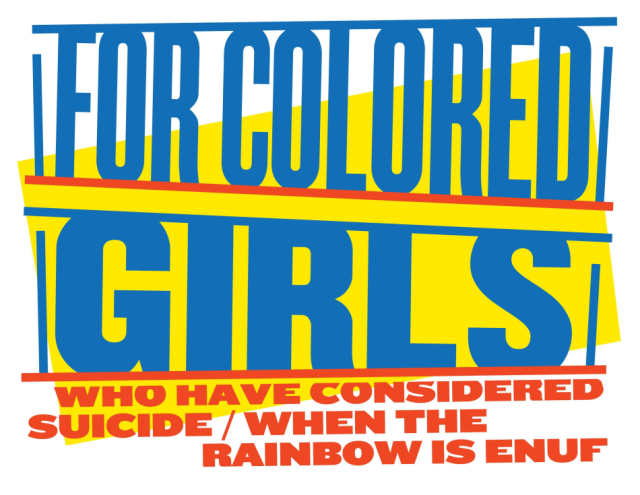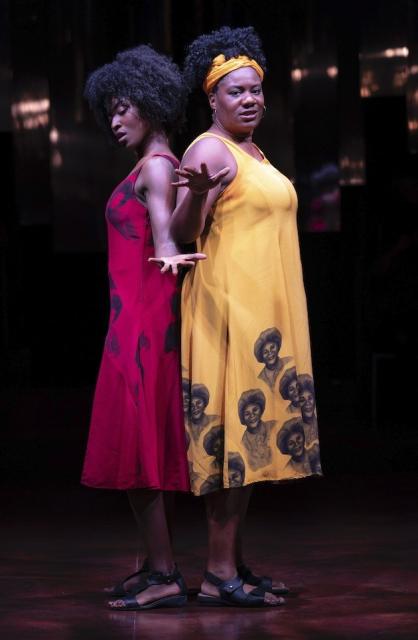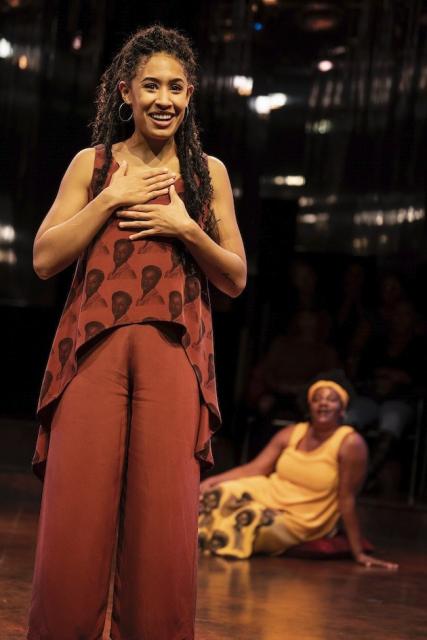


Nowhere is the contrast between today’s Broadway and off-Broadway more sharply defined than in the productions of Tina: The Tina Turner Musical at the Lunt-Fontanne and the revival of Ntozake Shange’s 1976 groundbreaking for colored girls who have considered suicide/When the rainbow is enuf, off-Broadway at the Public Theater. Both give glorious voice to African-American women dealing with sexist and racial oppression, but they could not be more different in their production history, form and delivery. Tina is a sleek jukebox musical, spectacularly entertaining but made from a cookie-cutter template. colored girls defies category and eschews plot, blending poetry, storytelling, movement and music to explore issues of identity, sexuality, and liberation among seven women identified only by the color of their costumes (designed with flair and individuality by Toni-Leslie James). The choreopoem—a form invented by Shange and attempted by few if any subsequent playwrights—began life in a woman’s bar in Berkeley, California. Reworked versions played the New Federal and Public Theaters before moving to Broadway for a Tony-winning run of 742 performances. Shange was only the second African-American woman to have a play produced on Broadway (Lorraine Hansberry being the first with A Raisin in the Sun and The Sign in Sidney Brustein’s Window.) for colored girls was later filmed for TV and the movies. The play has been an iconic hallmark of feminist theater, but would such a radical work by a new non-white, non-male author make it on the Broadway of today?
That said, Leah C. Gardner’s joyful revival is difficult to pigeonhole. Part dance concert, part poetry reading, part celebration of sisterhood, the show is a sort of community experience with audience members onstage in Myung Hee Cho’s open and airy set. Gardner’s energetic staging and Camille A. Brown’s streetwise choreography allow the monologues and set pieces to seamlessly flow into one another.
The characters do not have names, but the vibrant cast endows each with a unique and specific personality. Sasha Allen’s thrilling singing gives musical expression to the Lady in Blue’s blues. Hearing-impaired performer Alexandria Wailes provides eloquent gestures for the Lady in Purple. Celia Chevalier infuses the Lady in Brown with sass and spice as she recounts a childhood memory about an imagined love affair with the Haitian revolutionary hero Touissant L’Overture. Danaya Esperanza’s Lady in Orange dances with verve in a tribute to Latin movement. Okwui Okpokwasili gives full vent to the Lady in Green’s demands to get her emotional and psychological “stuff” back from a former romantic partner. Adrienne C. Moore is exuberant and bubbly as the Lady in Yellow who relives her sexual initiation during a high-school graduation party. Jayme Lawson’s Lady in Red gets to deliver the emotional centerpiece of the evening, a harrowing account of a psychotic Vietnam veteran destroying his estranged lover’s life. She does so with heartbreaking passion, but the other pieces of this colorful, moving mosaic are just as vivid.
